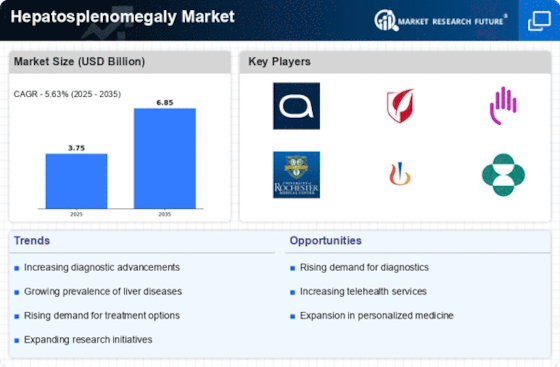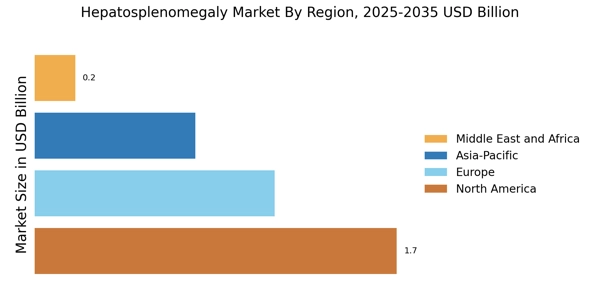Growing Geriatric Population
The increasing geriatric population is a significant factor influencing the Hepatosplenomegaly Market. Older adults are more susceptible to liver diseases due to age-related physiological changes and comorbidities. As the global population ages, the incidence of conditions leading to hepatosplenomegaly is anticipated to rise. This demographic shift necessitates enhanced healthcare services and interventions tailored to the needs of older patients. Consequently, the demand for diagnostic tools and treatment options for hepatosplenomegaly is expected to grow, driving market expansion. Healthcare systems are likely to adapt to this trend by investing in specialized care for the aging population, thereby impacting the Hepatosplenomegaly Market positively.
Rising Awareness of Liver Health
The growing awareness of liver health among the general population is a notable driver of the Hepatosplenomegaly Market. Educational campaigns and health initiatives aimed at promoting liver health are becoming more prevalent, leading to increased public knowledge about the risks associated with liver diseases. This heightened awareness encourages individuals to seek medical advice and undergo diagnostic testing for hepatosplenomegaly. Consequently, healthcare providers are witnessing a rise in patient consultations related to liver health, which is expected to boost the demand for diagnostic and therapeutic solutions within the Hepatosplenomegaly Market. As awareness continues to expand, the market is likely to benefit from a more informed patient base.
Increasing Prevalence of Hepatic Diseases
The rising prevalence of hepatic diseases, including hepatitis and cirrhosis, is a primary driver of the Hepatosplenomegaly Market. As these conditions lead to liver enlargement and splenomegaly, the demand for diagnostic and therapeutic solutions is expected to surge. According to recent health statistics, liver diseases account for a significant percentage of global morbidity and mortality, prompting healthcare systems to prioritize early detection and management. This trend is likely to stimulate investments in innovative treatment modalities and diagnostic tools, thereby enhancing the overall market landscape. Furthermore, the increasing awareness of liver health among populations may contribute to a higher rate of diagnosis, further propelling the Hepatosplenomegaly Market.
Increased Research Funding for Liver Diseases
The surge in research funding dedicated to liver diseases is a crucial driver of the Hepatosplenomegaly Market. Governments and private organizations are increasingly recognizing the need for innovative research to address the challenges posed by liver disorders. This influx of funding supports the development of new therapies and diagnostic tools aimed at managing hepatosplenomegaly. As research initiatives expand, there is a potential for breakthroughs that could significantly alter treatment paradigms. The focus on liver health research not only enhances the understanding of hepatosplenomegaly but also fosters collaboration among researchers, clinicians, and industry stakeholders, ultimately benefiting the Hepatosplenomegaly Market.
Technological Innovations in Imaging Techniques
Technological advancements in imaging techniques, such as ultrasound, CT scans, and MRI, are transforming the Hepatosplenomegaly Market. These innovations facilitate accurate diagnosis and monitoring of liver and spleen conditions, which is crucial for effective treatment planning. Enhanced imaging capabilities allow for earlier detection of hepatosplenomegaly, leading to timely interventions. The market for imaging technologies is projected to grow, driven by the increasing demand for non-invasive diagnostic methods. As healthcare providers adopt these advanced imaging modalities, the Hepatosplenomegaly Market is likely to experience significant growth, reflecting the importance of precise diagnostics in managing liver-related disorders.


















Leave a Comment